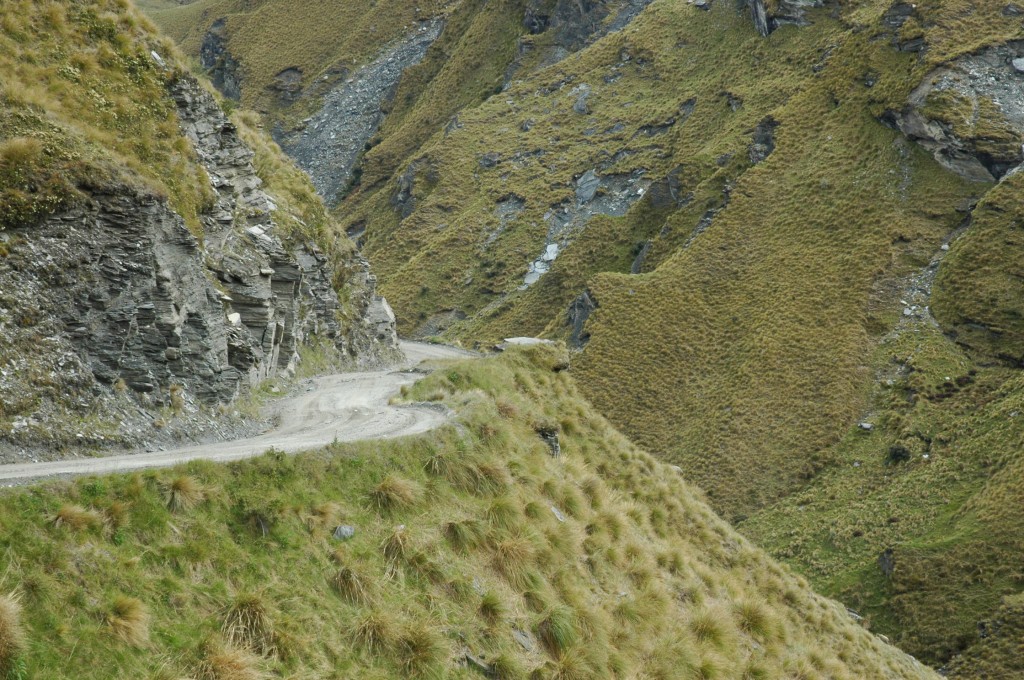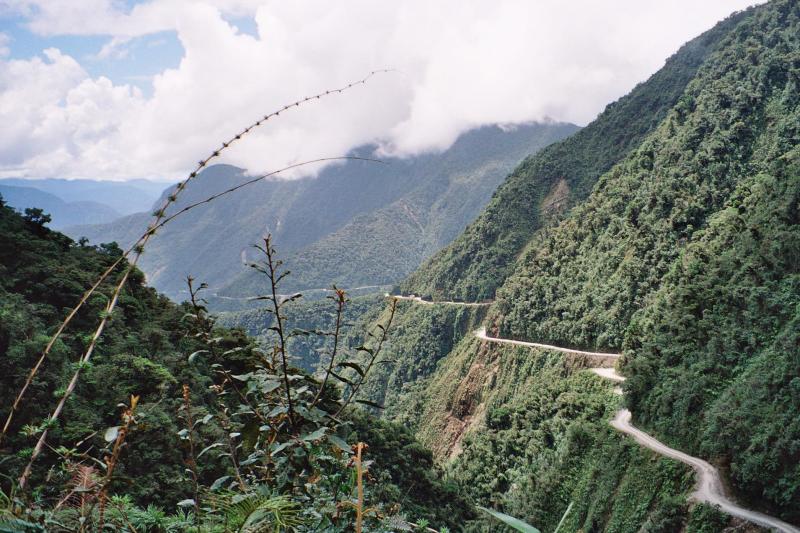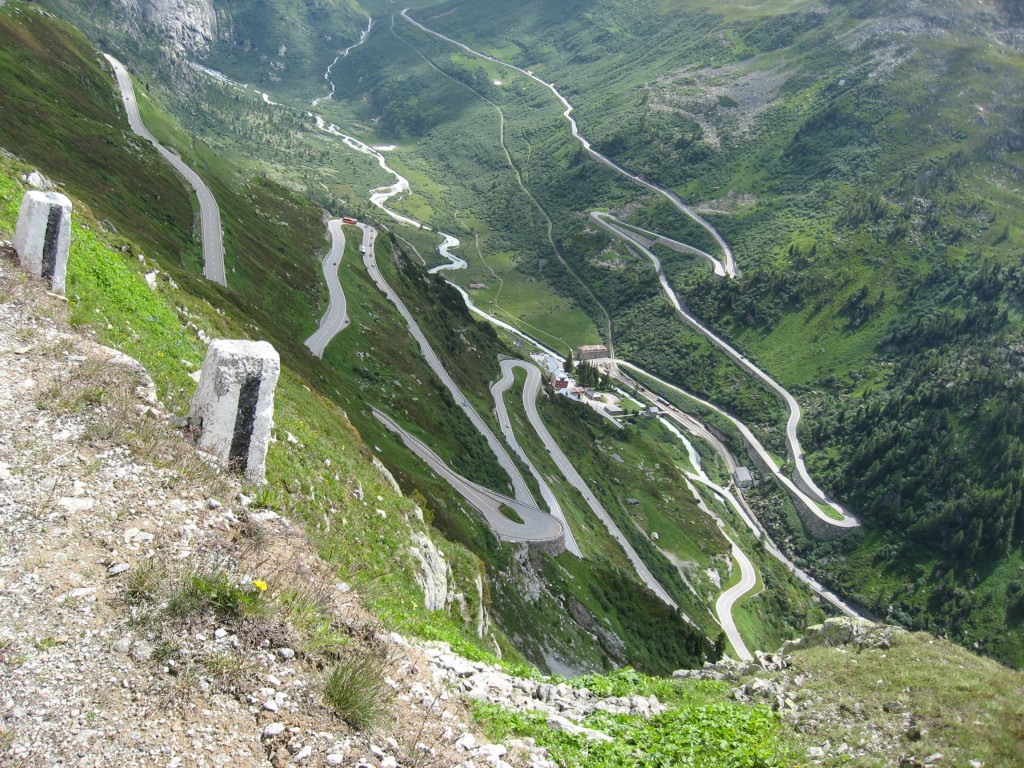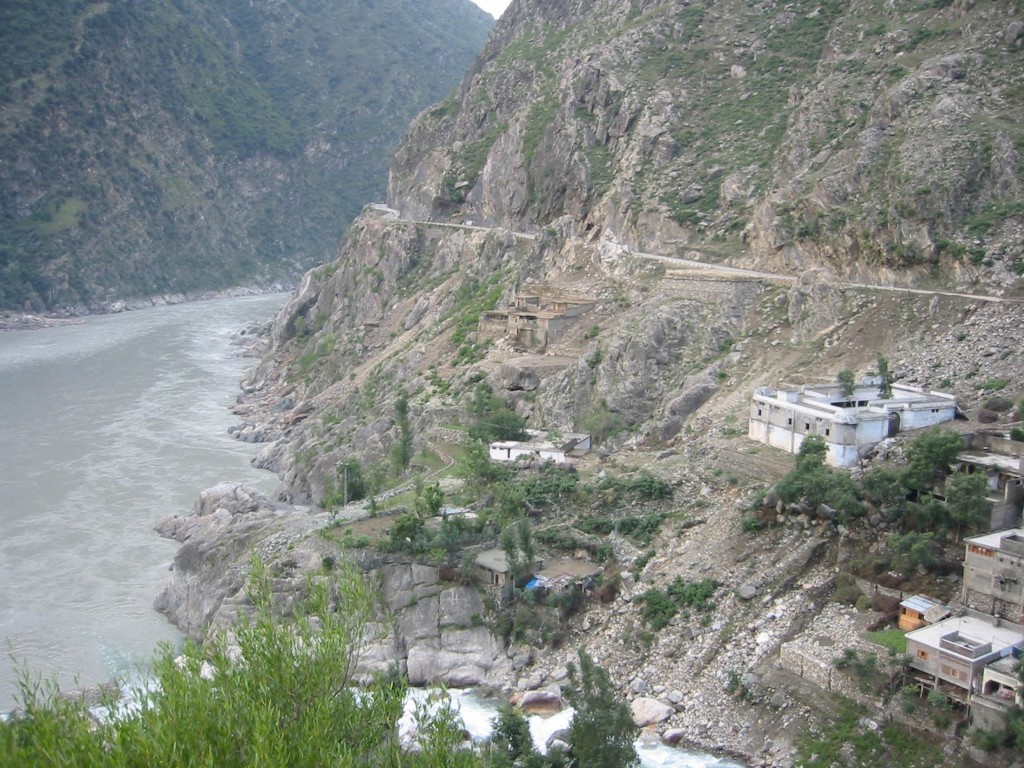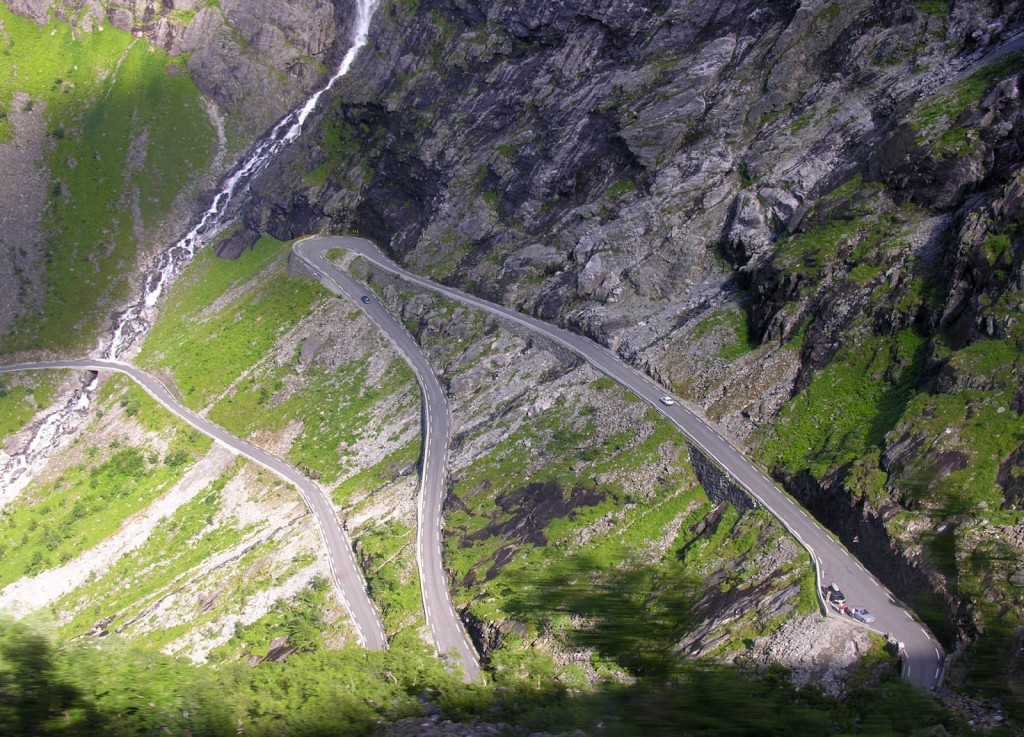BIG BANG NEWS
RESEARCH, TECHNOLOGY, SCIENCE, DIACHRONIC NEWS, COMMENTS, ,SPORTS,MUSIC,SKY AND STARS,AND MUSH MORE.
Αναζήτηση αυτού του ιστολογίου
Παρασκευή 25 Ιανουαρίου 2013
Πέμπτη 24 Ιανουαρίου 2013
Top 10 Dangerous Roads of the World
Top 10 Dangerous Roads of the World
It’s hard to imagine that how many dangerous roads are there in the world but there are more than 50 dangerous roads and the following 10 are considered to be the
most dangerous roads around the world we have heard about them. There are various factors for being these roads most dangerous.
Nature has created the borders that shouldn’t be crossed using huge rocks, steep slopes, stones, volcanoes but the human beings were so stubborn that they finally constructed the roads, but what we still can’t do is to ensure the safety.
1. Sichuan – Tibet Highway (China)
China’s high-altitude Sichuan – Tibet Highway covers about 1,500 miles between Chengdu in the east and Lhasa (Tibet) in the west, offering the choice between the northern or southern route. Both options enhance beautiful scenery, extensive mountain peaks, various historical and cultural attractions, and many famous rivers. Que’er Mountain pass, is considered to be the highest point on the route, rises to over 20,000 feet.
Like many other roads that cut through mountains, the Sichuan – Tibet Highway is prone to landslides, falling rocks, and extreme weather conditions that can close the road for a month at a time. Huge avalanches and altitude make your driving conditions unsafe. It’s certainly a great route for sightseeing, along with making your driving a thrill.
2. Skippers Road (New Zealand)
According to historians, a couple of shepherds in 1862 discovered gold in the Shotover River near Queenstown, New Zealand. This necessitated the creation of an access route, and eventually the result was in construction of Skippers Road, a narrow, winding, and impassable pathway that twists and turns for about 16 ½ miles through Skippers Canyon.
Skippers Road took 22 years to complete with blasted of the solid rock by Chinese laborers, and there is not much difference today than it was first created. In most places the road is too narrow for vehicles to pass each other; there are no guardrails, and retaining walls leaving absolutely no room for any negligence.
3. Halsema Highway (Philippines)
Located on the island of Luzon, the Halsema Highway passes through the Central Cordillera Valley in the Philippines from Baguio to Bontoc and farther on toward Tabuk and Tuguegarao. Land sliding and rock fallings are common and frequent, usually making motorists stranded for a long periods of time. Many portions of the road are still unpaved, although work is apparently in progress to bring about some improvements, and there are a large number of drop-offs that are steep enough to kill a traveler. Foggy conditions with the lack of required guardrails in certain areas make the Highway more dangerous which is already in dilapidated condition.
4. Patiopoulo – Perdikaki Road (Greece)
In the mountainous region of Greece, the route connecting Patiopoulo and Perdikaki is considered to be very dangerous that require constant care and attentiveness from their travelers. Potholes and loose, slippery gravel weaken a driver’s control while distractions from heavy traffic, pedestrians, and livestock create additional hazards. Many sections are very narrow and steep demanding the utmost of caution while travelling on this road.
5. Fairy Meadows Road (Pakistan)
Fairy Meadows is situated at the base of Nanga Parbat Pakistan at the altitude of 26,660-feet. It is a picturesque destination for photographers, backpackers, and mountain climbers who want to get closer to the lofty peak and enjoy the scenery. However, getting to Fairy Meadows, is not such an attractive experience as part of the trip involves surviving a 6-mile, hour-long drive on an unstable narrow road hacked out of the barren hills.
From Raikot Bridge to the village of Tato, this road offers the motorists all the features of your typical mountainside. It’s narrow, unpaved, steep, and of course there are no guardrails to prevent your Jeep from rolling down into the ravine. You can’t even drive it all the way to Fairy Meadows; the last section has to be covered by bicycle or on foot. A great road for adventurers, Fairy Meadows Road is definitely not for the faint of heart.
6. Old Yungas Road (Bolivia)
According to a travel association, Bolivia old Yungas Road is considered to be the one of most dangerous routes, which twists and turns for about 40 miles between the capital city of La Paz and the town of Coroico in the Yungas jungle region. If other roads seem risky, the old Yungas Road is nothing less than a mission impossible.
Constructed in the 1930s by Paraguayan prisoners of war, the Yungas Road was until recently the main route from La Paz to Bolivia’s northern Amazon rainforest region. Dropping nearly 12,000 feet in overall elevation, the road is extremely narrow, and frequent landslides and fog, offers no protection from the sheer cliffs that drop straight down for a couple thousand feet. Before a modernized and safer route was completed in 2006, somewhere between 100-200 casualties occurred every year, and the roadside is currently littered with memorials and crosses. For obvious reasons, locals have given it a simple nickname – Death Road. By the way, there are quite a few companies in La Paz that offer extreme bike tours of the Yungas Road for adventurers. If you want teasing death, then this is the road for you.
7. Stelvio Pass Road Trollstigen (Italy)
Stelvio Pass Road is located in Trollstigen Italy. This is an amazing road which connects the Valtellina with the upper Adige valley and Merano. It passes through the Italian Alps in nearby Bormio and Sulden, 75 km from Bolzano, close to Swiss border. It is considered a very dangerous road in the world, but if you watch it from a peak then you can find it one of the best views in the world, very awesome! It is surely breathtaking. The tour books advise that the toughest and most spectacular climbing starts from the Prato side, Bormio side.
8. Guoliang Tunnel Road (China)
The name of the tunnel translates from Chinese as the “Road that does not bear any mistakes”. First the tunnel was created by the villagers from the remote area of the Taihang Mountains to get a way out to the outside world. Presently the road is 15 feet high and 12 feet wide which is pretty scary for the drivers. The tunnel has 30 windows to enjoy the scenes. The Guoliang Tunnel Road is carved though a mountain in China. The tunnel is located in the Taihang Mountain, which are located in the Henan Province of China. Before this road was constructed, access to the nearby Guoliang village was limited to a difficult path carved into the mountainside. The village is nestled in a valley surrounded by towering mountains cut off from civilization. In 1972 a group of villagers led by Shen Mingxin decided to carve a road into the side of the mountain. They generated money to purchase hammers and other tools. Thirteen villagers began the project. The tunnel is 1.2 kilometers long, 5 meters tall and 4 meters wide. Some of the villagers died accidently during the construction of the road and tunnel. The tunnel was opened for traffic in May 1977.
9. Karakoram Highway (KKH) Pakistan to China
The Karakoram Highway (KKH) in Chinese: 喀喇昆仑公路 is the highest paved international road in the world is 810 Kilometer long. It connects China and Pakistan across the Karakoram mountain range, through the Khunjerab Pass at an altitude of 4,693 meter. It connects China’s Xinjian region with Pakistan’s Gilgit-Baltistan and also serves as a popular tourist route. Due to its high elevation and the difficult conditions in which it was constructed through cutting the mountain rocks, it is also referred as the “Ninth Wonder of the World and the one of the most dangerous routes of the world.
10. Trollstigen Road (Norway)
Trollstigen is located around 15 kilometres south of Åndalsnes in the county of Møre og Romsdal, north in Fjord Norway. The region consists of 25,000 inhabitants, which is the largest town in the area. Trollstigen has a steep incline of 9 percent and consists of 11 hairpin bends up a steep mountainside. Encircling the road are huge mountains. Names such as Kongen (the King), Dronningen (the Queen) and Bispen(the Bishop) confirm their majesty.
Trollstigen is a mountain road in Rauma, Norway, part of Norwegian National Road connecting Åndalsnes in Rauma and Valldal in Norddal. The road up is narrow with many sharp bends, and although it has been widened in recent years, vehicles over 12.4 meters long are prohibited from driving on this road. At the top there is a large parking place which allows visitors to leave their cars and walk for about ten minutes to a viewing balcony which overlooks the road with its bends and the Stigfossen waterfall. Stigfossen is a beautiful waterfall which falls 320 meters down the mountain side and looks a spectacular view for the travelers.
Τετάρτη 23 Ιανουαρίου 2013
Βοτανοθεραπεία
Βοτανοθεραπεία …!
23 Ιανουαρίου, 2013 — vatopaidifriend5 Τα βότανα, όπως είναι γνωστό άλλωστε από την αρχαιότητα, διαδραματίζουν έναν ιδιαίτερο ρόλο στη διατροφή και την υγεία μας.
Τα βότανα, όπως είναι γνωστό άλλωστε από την αρχαιότητα, διαδραματίζουν έναν ιδιαίτερο ρόλο στη διατροφή και την υγεία μας.
Τα συστατικά τους (πτητικά έλαια, τανίνες κτλ), εκτός από το να δίνουν ευχάριστη γεύση στα φαγητά, έχουν χωνευτικές ιδιότητες, ανακουφίζουν από διαφόρους πόνους ή ενοχλήσεις και μπορούν να χρησιμοποιηθούν ως το καλύτερο φάρμακο σε διάφορες παθήσεις!
Ας γνωρίσουμε σιγά σιγά, μερικά από αυτά:
Τσιν-σενγκ: Τονωτικό, ειδικά για εξασθενημένους οργανισμούς, ηλικιωμένα άτομα ή καταστάσεις στρες. Οι ορμονικές ουσίες του φυτού αυτού, βελτιώνουν την αυτοσυγκέντρωση και την αντοχή και έχουν ηρεμιστικές, αλλά και διεγερτικές ιδιότητες. Έχει χρησιμοποιηθεί για θεραπεία της στηθάγχης και ως επουλωτικό τραυμάτων.
Λεύκη: Πολυπαινεμένη για τη γλυκιά της ευωδιά, έχει χρησιμοποιηθεί για θωρακικές λοιμώξεις και για πονόλαιμους (ως γαργάρα). Χρησιμοποιείται για την αντιμικροβιακή, αποχρεμπτική και αντιβακτηριακή της δράση, ενώ η αλοιφή από λεύκη, ανακουφίζει από τους πόνους των ρευματισμών.
Αγιόκλημα: Ο ευωδιαστός αυτός θάμνος, εκτιμάται ιδιαίτερα για το άρωμα του, ενώ ταυτόχρονα χρησιμοποιείται σε δερματικές μολύνσεις.
Ραδίκι: Είναι ήπιο, αλλά αποτελεσματικό πικρό τονωτικό που αυξάνει τη ροή της χολής, ώστε να αποτελεί κατάλληλο φάρμακο για τις πέτρες στη χοληδόχο κύστη. Διαθέτει διουρητικές ιδιότητες και χρησιμοποιείται κατά των ρευματισμών και της ποδάγρας, αποβάλλοντας το ουρικό οξύ από τον οργανισμό. Είναι χρήσιμο στη θεραπεία της ταχυπαλμίας, της καρδιακής αρρυθμίας και των ινιδισμών, ελαττώνοντας τους καρδιακούς παλμούς. Τέλος, έχει χρησιμοποιηθεί για μείωση των επιπέδων σακχάρου του αίματος καθώς και σε περιπτώσεις αναιμίας.
Αγκινάρα: Διεγείρει την έκκριση χολής, καθιστώντας τη χρήσιμη στη θεραπεία της ανεπάρκειας του συκωτιού και της ατελούς πέψης. Η κυναρίνη που περιέχει ελαττώνει τα επίπεδα χοληστερόλης και τριγλυκεριδίων στο αίμα και ως εκ τούτου χρησιμοποιείται στη θεραπεία αρτηριοσκλήρυνσης και γενικά καρδιαγγειακών παθήσεων. Είναι επίσης διουρητικό με χρησιμότητα στη θεραπεία νεφρικών παθήσεων και ύπαρξης πρωτεΐνης στα ούρα.
Χαμομήλι: Τα πτητικά του έλαια θεωρούνται δυνατά αντισηπτικά, επουλώνει πληγές, είναι αντιφλεγμονώδες και σπασμολυτικό, επιταχύνει την επούλωση ελκών και έχει αντιμυκητιακές ιδιότητες. Το ρόφημα του δρα ηρεμιστικά επιφέροντας ύπνο και χρησιμοποιείται για τις πεπτικές διαταραχές, το φούσκωμα, την καούρα και τη διάρροια. Ανακουφίζει από του επώδυνους πόνους και της ημικρανίες της εμμηνόρροιας, καθώς και τους πόνους από ρευματισμούς και ποδάγρα. Κομπρέσα από άνθη χαμομηλιού, χρησιμοποιείται σε ισχιαλγίες και ραγάδες, ενώ αλοιφές του, σε δερματικές παθήσεις, όπως το έκζεμα. Εισπνοές ατμών ανακουφίζουν από το άσθμα και την καταρροή και βοηθούν περιπτώσεις ακμής.
Αγριάδα: Ήπιο διουρητικό με αντιβιοτικές ιδιότητες, ιδανικό για λοιμώξεις του ουροποιητικού, πέτρες και προστατίτιδα. Χρησιμοποιείται ακόμη για τη διέγερση του συκωτιού και της χοληδόχου κύστης.
Καλαμπόκι: Αποτελεί θαυμάσιο ανακουφιστικό διουρητικό, ώστε να χρησιμοποιείται σε θεραπείες παθήσεων του ουροποιητικού συστήματος. Ακόμη, ο θύσανος του καλαμποκιού χρησιμοποιείται για να ρίχνει την υψηλή πίεση.
Λεβάντα: Ένα από τα πιο δημοφιλή αρωματικά βότανα, μπορεί να χρησιμοποιηθεί ως γιατρικό σε εγκαύματα ή τσιμπήματα. Έχει ηρεμιστικές ιδιότητες, που μπορούν να περιορίσουν το άγχος, την υπερένταση, τους νευρικούς πονοκεφάλους καθώς και να χαλαρώσουν τους σπασμούς του πεπτικού σωλήνα.
Μελισσόχορτο: Χρησιμοποιείται σε αρωματοθεραπεία κατά της νευρικότητας, της κατάθλιψης, της αϋπνίας και των πονοκεφάλων. Έχει ηρεμιστικές ιδιότητες και μπορεί ως ρόφημα να χρησιμοποιηθεί μετά το γεύμα, διευκολύνοντας την πέψη και ανακουφίζοντας από κωλικούς και φουσκώματα. Χρησιμοποιείται σε αλλεργίες όπως το έκζεμα, χάρη στην ανιισταμινική δράση του βαλσαμικό του ελαίου. Ανακουφίζει από τους πόνους της περιόδου, είναι χρήσιμο εφιδρωτικό κατά της γρίπης και των κρυολογημάτων, διαθέτει αντιβακτηριακές ιδιότητες και είναι αποτελεσματικό κατά των μαγουλάδων, του επιχείλιου έρπη και άλλων ιών.
Μέντα: Επιδεικνύει αντισπασμωδική δράση στους μαλακούς μύες και είναι αποτελεσματική σε κωλικούς και φουσκώματα. Είναι χρήσιμη στη βελτίωση της αυτοσυγκέντρωσης, ενώ η αζουλίνη που περιέχει, διαθέτει αντιφλεγμονώδεις και επουλωτικές των ελκών ιδιότητες.
Δενδρολίβανο: Είναι εξαιρετικό για τους πονοκεφάλους, ως αφέψημα ή χρησιμοποιούμενο εξωτερικά ως κομπρέσα. Ελαττώνει το φούσκωμα και διεγείρει την πέψη, το συκώτι και τη χοληδόχο, αυξάνοντας τη ροή της χολής. Ανακουφίζει από τους πόνους περιόδου, χρησιμοποιείται κατά των ρευματισμών, βελτιώνει το κυκλοφορικό και ενισχύει εύθραυστα αγγεία.
Φασκόμηλο: Περιέχει αντιβακτηριακά οξέα, ιδιαιτέρως κατά του σταφυλόκοκκου και είναι ισχυρό αντισηπτικό. Σε συνδυασμό με λίγο ξύδι, μπορεί να χρησιμοποιηθεί ως γαργάρα σε πονόλαιμους, λαρυγγίτιδα και αμυγδαλίτιδα. Ως στοματική πλύση, είναι αποτελεσματικό κατά της ουλίτιδας και στοματικών ελκών. Διεγείρει την πέψη, τονώνει το εξασθενημένο νευρικό σύστημα και έχει την ιδιότητα να σταματά την εφίδρωση. Καθίσταται χρήσιμο για τις εξάψεις της εμμηνόπαυσης, ενώ είναι ωφέλιμο σε περιπτώσεις αμηνόρροιας ή επώδυνης περιόδου. Στις θηλάζουσες μητέρες, ενδέχεται να περιορίζει τη ροή του γάλακτος.
Θυμάρι: Ως ζεστό ρόφημα είναι εφιδρωτικό και συνεπώς αποτελεσματικό κατά του κρυολογήματος. Χρησιμοποιείται κατά του κοκίτη, είναι αποχρεμπτικό και εξαιρετικό γιατρικό κατά του πονόλαιμου και της ουλίτιδας. Επιπλέον, καταπραΰνει το πεπτικό σύστημα, ανακουφίζοντας από τα φουσκώματα, ενώ εξωτερικά, ως έλαιο σε μπάνια, ανακουφίζει από τους πόνους των ρευματισμών.
Γλυκόριζα: Χάρη στη γλυκιά της γεύση διαθέτει την ικανότητα να καλύπτει την πικρή γεύση άλλων βοτάνων και χρησιμοποιείται σε πολλά μίγματα αυτών. Παράλληλα, όμως επιδεικνύει ισχυρή αντιφλεγμονώδη και αντιαρθριτική δράση, παρόμοια της κορτιζόνης. Είναι ήπια καθαρτική και ελαττώνει τα όξινα επίπεδα του στομάχου, ανακουφίζοντας έτσι από την καούρα. Διαθέτει επουλωτικές ιδιότητες κατά των στοματικών ελκών, εξαπλώνοντας ένα είδος προστατευτικού ζελέ πάνω στα στοματικά τοιχώματα και επιπρόσθετα καταπραΰνει τους σπασμούς του παχέος εντέρου. Αυξάνει τη ροή της χολής και μειώνει τα επίπεδα χοληστερόλης στο αίμα, περιορίζει του ερεθισμούς του λαιμού, ενώ έχει χρησιμοποιηθεί και ως αντιπυρετικό.
Αλόη: Το ζελέ που αποστάζεται από τα φύλλα του, εφαρμοζόμενο τοπικά, συμβάλλει στην αναγέννηση της επιδερμίδας και μπορεί να χρησιμοποιηθεί απευθείας σε εγκαύματα, αμυχές και τραύματα.
Ευκάλυπτος: Το έλαιο ευκαλύπτου είναι ισχυρό αντισηπτικό και χρησιμοποιείται με εισπνοές ατμού, κατά των κρυολογημάτων και της καταρροής και σε διάλυμα ως εντριβή του στήθους, για το βήχα. Επιπλέον, απαλλάσσει από ψείρες και ψύλλους!
Ανεμώνη: Είναι ιδιαίτερα ευεργετική για τις γυναίκες, σε περιπτώσεις νευραλγίας, πονοκεφάλων και νευρικής εξάντλησης, ενώ ανακουφίζει από τους σπασμούς της περιόδου, όταν είμαστε αγχωμένες ή ευερέθιστες. Ακόμη, χρησιμοποιείται για τη θεραπεία διαταραχών του ανδρικού αναπαραγωγικού συστήματος. Τέλος, το βάμμα ανεμώνης συνίσταται για την ωτίτιδα.
Τριανταφυλλιά: Δημοφιλής για το άρωμα της, παρέχει σημαντικά διατροφικά στοιχεία, όπως βιταμίνη C, E, K, τανίνη κ.α., με αποτέλεσμα το τσάι από τριαντάφυλλο, να είναι ιδιαίτερα ωφέλιμο. Ιατρικά, τα φύλλα του ρόδου, είναι ήπιο υπακτικό και οι στυπτικές τους ιδιότητες, τα καθιστούν χρήσιμα στην επούλωση πληγών. Οι σπόροι του χρησιμοποιούνται ως διουρητικό, ενώ τα συγκάρπια έχουν τονωτική δράση.
Κολλιτσίδα: Καλό διουρητικό, απομακρύνει την άμμο και τις πέτρες του ουροποιητικού συστήματος, ενώ έχει και τη φήμη αντι-υπερτασικού και αντιπυρετικού. Διεγείρει το λεμφικό σύστημα, ανακουφίζοντας τους πρησμένους λεμφαδένες και απομακρύνει τοξίνες από τον οργανισμό. Είναι χρήσιμο λοιπόν, σε ασθένειες, όπως το έκζεμα, η ψωρίαση και η αρθρίτιδα, ενώ παραδοσιακά είχε χρησιμοποιηθεί και κατά του καρκίνου, ιδίως του λεμφικού συστήματος.
Τίλιο: Τα άνθη του τίλιου σε ζεστό αφέψημα, αποτελούν εξαίρετο εφιδρωτικό φάρμακο κατά των κρυολογημάτων, της γρίπης και της καταρροής, ενώ δρουν χαλαρωτικά στο νευρικό σύστημα, με αποτέλεσμα να χρησιμοποιείται σε υπερκινητικά παιδιά. Θεωρείται αντιυπερτασικό, καλό διουρητικό, χρήσιμο στη θεραπεία πετρών των νεφρών, ποδάγρας και αρτηριοσκλήρυνσης. Επιπλέον, η εσωτερική του φλούδα είναι αντισπασμωδική και διευρύνει τις στεφανιαίες αρτηρίες, καθιστώντας το χρήσιμο σε στεφανιαίες παθήσεις.
Μαϊντανός: Εκτός από νόστιμο συστατικό σε σάλτσες, είναι και χρήσιμο διουρητικό, κατάλληλο για λοιμώξεις του ουροποιητικού, πέτρες στα νεφρά και κατά της ποδάγρας. Αυξάνει τη ροή του μητρικού γάλακτος σε θηλάζουσες και τονώνει τους μύες της μήτρας, ενώ αποτελεί καλή πηγή βιταμίνης C και σιδήρου. Τέλος, ενδυναμώνει την πέψη, ενώ τα φύλλα του φρεσκάρουν την αναπνοή.
Γλυκάνισο: Το ρόφημα του, ανακουφίζει από τη δυσπεψία, το φούσκωμα και τους κωλικούς, ενώ η χαλαρωτική και αποχρεμπτική του δράση, το καθιστά χρήσιμο στην αντιμετώπιση του έντονου βήχα.
Τσουκνίδα: Παρόλο που την καταριόμαστε λόγω του τσιμπήματος της, είναι ανεκτίμητη ως τροφή, πλούσια σε βιταμίνες και μέταλλα, αλλά και ως γιατρικό! Τα φρέσκα πράσινα φύλλα της, μαγειρεύονται και τρώγονται σαν σαλάτα, ως σούπα ή ως ρόφημα. Συμβάλλει στην αντιμετώπιση της αναιμίας, αφού περιέχει βιταμίνη C, που εξασφαλίζει την ομαλή απορρόφηση σιδήρου. Το ρόφημα της, αυξάνει την έκκριση ουρικού οξέος, καθιστώντας τη χρήσιμη κατά της αρθρίτιδας και της ποδάγρας. Τοπικά, μπορεί να χρησιμοποιηθεί σε πονεμένες αρθριτικές κλειδώσεις, ως πλύση κατά των αιμορροΐδων και ως σκόνη κατά της ρινορραγίας. Διευκολύνει τη ροή του μητρικού γάλακτος, ενώ χαμηλώνει τα επίπεδα σακχάρου στο αίμα. Ακόμη, χρησιμοποιείται κατά της αιματηρής περιόδου, καθώς και σε γυναίκες στην εμμηνόπαυση. Τέλος, είναι ωφέλιμη σε εκζέματα, ενώ η λοσιόν της εξαλείφει την πιτυρίδα!
Μάραθος: Διαθέτει απισχναντικές και χωνευτικές ιδιότητες, ενώ είναι καταπραϋντικό για τη δυσπεψία, τους κωλικούς των βρεφών και την καούρα. Ακόμη, ενισχύει τη ροή του μητρικού γάλακτος, είναι αντισπασμωδικό, αντιβακτηριακό, διουρητικό και χρήσιμο ως οφθαλμική πλύση σε κουρασμένα, πονεμένα μάτια.
Βαλεριάνα: Τα βαλποτριώδη συστατικά του φυτού, θεωρούνται υπεύθυνα για την ηρεμιστική του δράση στο κεντρικό νευρικό σύστημα και κατ΄ επέκταση καθιστούν τη βαλεριάνα εξαιρετικό φάρμακο κατά του άγχους, της υπερέντασης, της αϋπνίας, αλλά και των πονοκεφάλων. Επιδρά δυναμωτικά στην καρδιά, κατά της ταχυπαλμίας και ενδέχεται να ελαττώνει την πίεση. Είναι επίσης, αντισπασμωδική και χρήσιμη κατά της νευρικής δυσπεψίας, της στομαχικής κράμπας, των πόνων της περιόδου και σε περιπτώσεις σπαστικού ή ευερέθιστου εντέρου.
Βιολέτα: Εξαίσιο αποχρεμπτικό, χρήσιμο στη θεραπεία ποικίλων διαταραχών του αναπνευστικού συστήματος. Στη Γαλλία, χρησιμοποιούνται ως κομπρέσες κατά των πονοκεφάλων μετά από οινοποσία και ξενύχτι, αλλά και σε ημικρανίες. Είναι αποτελεσματική σε εμπύρετες καταστάσεις και ως γαργάρα για τους ερεθισμούς των ούλων και του λαιμού. Από τα φύλλα, γίνεται ένα καταπραϋντικό κατάπλασμα για τις επώδυνες ραγάδες των θηλών του στήθους, ενώ έχει χρησιμοποιηθεί και κατά καλοηθών καρκινικών όγκων. Η ρίζα της σε μεγάλες δόσεις είναι εμετική, ενώ τα άνθη της έχουν ηρεμιστική δράση. Τέλος, στην κινέζικη ιατρική έχει χρησιμοποιηθεί και στη θεραπεία των μαγουλάδων.
Τριφύλλι: Είναι χαλαρωτικό και αποχρεμπτικό, χρήσιμο στη θεραπεία του βήχα, της βρογχίτιδας και του κοκίτη. Χρησιμοποιείται κατά δερματοπαθειών, όπως το έκζεμα και η ψωρίαση και είναι ωφέλιμο σε παιδιά που πάσχουν από εκζεματικό- ασθματικό σύνδρομο.
Συνοψίζοντας, γνωρίσαμε ένα μεγάλο φάσμα βοτάνων, το οποίο μπορεί να χρησιμοποιηθεί με φαντασία και μεράκι στην μαγειρική σας. Προσθέστε νοστιμάδα και ποικιλία γεύσεων, ανοίγοντας ένα καινούργιο δρόμο στις διατροφικές σας συνήθειες, που θα σας τονώσει, θα σας ανακουφίσει, θα σας γιατρέψει και … θα σας αλλάξει τη διάθεση!
Κυριακή 20 Ιανουαρίου 2013
DAKAR FINIS
| Pos. | N° | Name |
| 1 | 302 | Stéphane PETERHANSEL (FRA) |
| 2 | 301 | Giniel DE VILLIERS (ZAF) |
| 3 | 307 | Leonid NOVITSKIY (RUS) |
| Pos. | N° | Name |
| 1 | 501 | Eduard NIKOLAEV (RUS) |
| 2 | 505 | Ayrat MARDEEV (RUS) |
| 3 | 510 | Andrey KARGINOV (RUS) |
| Pos. | N° | Name |
| 1 | 1 | Cyril DESPRES (FRA) |
| 2 | 11 | Ruben FARIA (PRT) |
| 3 | 7 | Francisco LOPEZ (CHL) |
| Pos. | N° | Name |
| 1 | 250 | Marcos PATRONELLI (ARG) |
| 2 | 254 | Ignacio Nicolás CASALE (CHL) |
| 3 | 253 | Rafal SONIK (POL) |
Παρασκευή 18 Ιανουαρίου 2013
Πέμπτη 17 Ιανουαρίου 2013
Sneak Peek: Rise of the Drones | NOVA
Rise of the Drones premieres Wednesday, January 23rd at 9PM/8c.
Two dead, many injured and taken hostage in Algeria
Two foreign nationals were killed and six people were injured and many others hostage after attacked a bus Wednesday and complex inhabited by workers on oil facilities in the region Ain Amenas in Algeria, near the border with Libya.
Two hostages, one British and one Algerian, were killed and six others wounded in today's attack by twenty men against a bus unit extraction of natural gas in southern Algeria, as announced by the Algerian Interior Minister Ntachou Oulnt Kamplia.
"There are two dead, one Algerian and one Briton," the minister said on state television and said that one British, one Norwegian and one Scot and two detectives and an agent of the Algerian security were injured in the attack, which was followed by the capture hostages.
The attackers were driven initially by the guards who accompanied the bus, but after previously injured six people: two foreign civilians, two policemen and two security guards the statement said the ministry was broadcast by the Algerian agency APS. The nationalities of the wounded have
elucidated. After the attack on the bus carrying the wounded in Ain Amenas.
The gunmen then went to the homes of workers besieged a number of them came in and managed to catch at least 40 people hostage, including many foreigners.
Meanwhile, an armed Islamist group has claimed responsibility for the seizure of hostages and demanded mainly "to stop the attack," Mali said in a statement published on its website Mauritania Alakhbar, which regularly publishes announcements jihadists. "We announce that we have achieved a large attack in response to the (...) crusade carried out by French forces in Mali," the organization's statement "sign in blood", published in Alkhbar.
This is the name given by the Algerian Mokhtar Belmochtar, who was recently removed from Al Qaeda in the Islamic Maghreb (Aqmi), the unit of fighters. "We confirm that the hostages are more than 40 Crusaders, among which 7 are 2 Brits and Americans, among other nationalities," continues the organization's communication.
"Sit Algeria and countries hostage responsible for any delay in performance of our terms, of which the first is to stop this attack on our own in Mali," the organization states. "Algeria has been chosen as the site of this company to learn (Algerian President Abdelaziz) Bouteflika that will never accept to humiliate the price of the Algerian people (...) opening the Algerian airspace French aircraft", concludes organization communication.
As reported earlier, the Algerian agency APS, Algerian nationals held hostage by armed Islamists in the extraction of natural gas in eastern Algeria were released. Citing local sources, the agency reported that the Algerians were released in small groups. The armed Islamists still hold 41 foreigners, mostly Norwegians, Irish, American, British and Japanese. One of the kidnappers told the news agency ANI Mauritania, warned that any attempt to release the hostages would have "tragic end". He claimed that members of his organization, which is linked to Al Qaeda have placed mines around the oil facilities are surrounded by the army.
Again, according to ANI, the Islamists said "safety of the hostages" should stop military operations in northern Mali France.
Altogether 150 employees in French Algerians CIS Catering company still mines in the BP gas in eastern Algeria, where they were held hostage after the attack about "sixties" people from neighboring countries, said Wednesday the president general manager Rezis Arno.
"I have 150 employees Algerians who have been released within the premises unlike foreign hostages, who are crammed into a corner and could not move. Yet they (Algerian officials) are not allowed to leave the premises" , explained Arno, confirming the information published on the website of the newspaper Journal Du Dimanche.
Meanwhile, the interior minister of Algeria Ntachou Oulnt Kamplia said today that authorities would not negotiate with "terrorists" who keep following the deadly attack, many hostages. The Algerian authorities "will not respond to claims of terrorists and deny any negotiation," he said on state television, referring to the attack and then the taking of hostages, who are foreigners and Algerians.
A plant employee, who asked not to be named, said the kidnappers seek the release of 100 Islamic militants held in Algeria to release the hostages. "The kidnappers ask for the release of 100 terrorists held in Algeria to release their hostages," he said by telephone. "The attackers demanded the Islamists were brought to the region of northern Mali," he said, who had witnessed her captivity and in the region.
The kidnappers holding Algerians and foreigners hostage in southeastern Algeria allegedly asked to leave the country with their hostages, which refused Algiers, said the minister of interior Ntachou Oulnt Kamplia. "It seems that they want to leave this area to leave the country with their hostages, which would not be accepted by the Algerian authorities," he said on public television. The minister noted that the kidnappers are "surrounded" by the army and security services to mines gas in Ain Amenas.
The Kamplia also noted that the perpetrators of the attack and hostage-taking today in these facilities in southeastern Algeria, there came neither Libya nor from Mali. "The terrorist group that attacked the plant was introduced (in Algeria) or from Mali or from Libya," he said in statements made in public television and stated that this is a group of "about twenty men from the region. "
One of the attackers in which was earlier Wednesday telephone told AFP that the kidnappers are members of Al Qaeda, who came from Mali.
The ministry did not identify the organization to which he belonged perpetrators. But according to the announcement and is armored vehicles arrived with three "residential complex at Sonatrach (SS state mining company and exploitation of oil and natural gas) in Tigkantourin, near Ain Amenas, located 100 kilometers from the border" Libya and Algeria.
Under deployed soldiers and men of the security services and "take any measures" to protect employees. Because the attack shutdown of oil installations.
Εγγραφή σε:
Αναρτήσεις (Atom)

